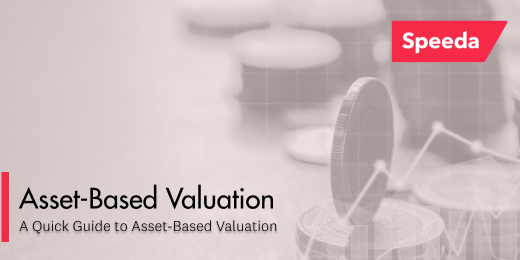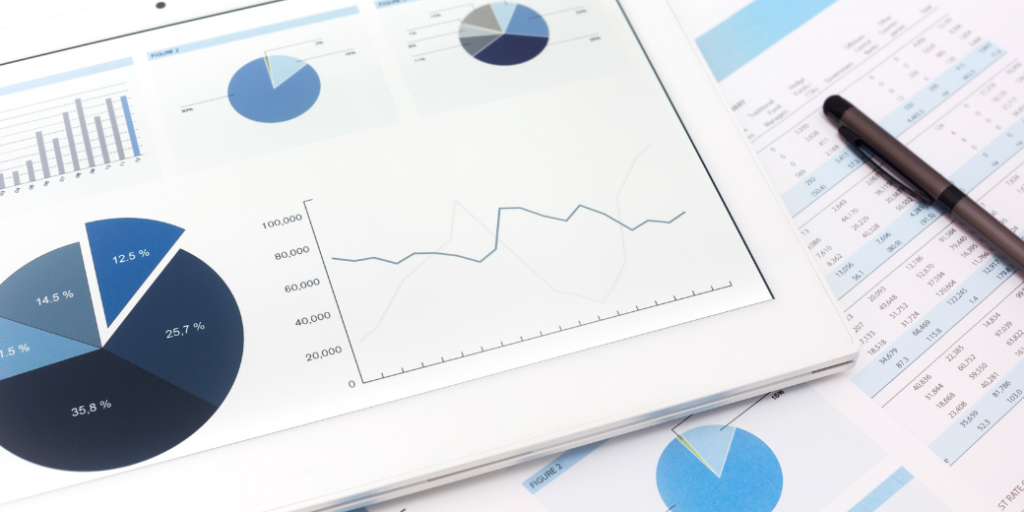Resource Center
Asset-Based Valuation | Quick Guide

What is Asset-Based Valuation?
Asset-based valuation is a method of determining the value of a business by examining the total value of its assets. This approach involves identifying and valuing all the tangible and intangible assets owned by the company and then subtracting the total liabilities. Tangible assets include items like real estate, machinery, and vehicles, while intangible assets encompass intellectual property such as patents, trademarks, and copyrights.
Why Do We Use Asset-Based Valuation?
- Objective Business Valuation: It provides an objective measure of a company’s worth, which is essential for various business activities such as selling the business, securing loans, or attracting investors.
- Strategic Decision-Making: It aids in strategic decision-making by providing a clear picture of the company’s financial health and asset base.
- Mergers and Acquisitions (M&A): This method is particularly useful in M&A, where a precise valuation of assets is necessary to determine a fair selling price or merger terms.
- Negotiation: Knowing the exact value of your business can offer peace of mind and help avoid embarrassment during negotiations with potential buyers or investors.
Approaches to Asset-Based Valuation
Liquidation Value Approach
The liquidation value approach estimates the value of a company’s assets if they were to be sold quickly in a distressed or forced sale. This method is typically employed in situations where a company is facing financial distress or bankruptcy, and its assets need to be liquidated to repay creditors.
Key Characteristics:
- Urgency of Sale: Assumes assets will be sold for less than their fair market value due to the urgency of the sale.
- Conservative Estimate: Provides a conservative estimate of a company’s value, taking into account the potential discounts applied to the assets in a forced sale.
- Financial Distress Context: Best suited for companies facing financial trouble where a quick asset sale is necessary.
Example:
A company in bankruptcy might value its assets at 70% of their fair market value to reflect the lower prices they would fetch in a quick sale.
Replacement Value Approach
The replacement value approach estimates the cost of replacing a company’s assets with similar or equivalent assets at current market prices. This method considers the cost of acquiring new assets and any additional costs associated with making those assets operational, such as installation and transportation.
Key Characteristics:
- Current Market Prices: Values assets based on the cost to replace them at current market prices, not historical cost or book value.
- Operational Costs Included: Takes into account all costs necessary to make the new assets operational.
- Higher Valuation Potential: May result in a higher valuation compared to the liquidation value approach, as it assumes assets are replaced at market prices rather than sold at a discount.
Example:
A manufacturing company might use this approach to determine the cost of replacing its machinery and equipment with new, similar items, including installation and transportation costs.
Going Concern Value Approach
The going concern value approach estimates the value of a company’s assets based on their ability to generate future cash flows. This method assumes the company will continue to operate and generate profits, incorporating both tangible and intangible assets.
Key Characteristics:
- Future Cash Flows: Values assets based on their potential to generate future earnings.
- Comprehensive: Considers both tangible assets (like property and equipment) and intangible assets (like patents and trademarks).
- Healthy Companies: Often used for valuing profitable companies with strong future prospects.
Example:
A technology firm with valuable patents and a strong market presence might use this approach to reflect the revenue potential of its intellectual property and ongoing business operations.
Pros of Asset-Based Valuation
Flexibility: This method can be adapted to include off-balance-sheet items, making it versatile.
Simplicity: The formulas used in asset-based valuation are straightforward, primarily involving subtraction of liabilities from assets.
Detailed Analysis: It provides a thorough analysis of all assets and liabilities, giving a comprehensive picture of the company’s worth.
Cons of Asset-Based Valuation
Complexity with Intangibles: Valuing intangible assets can be complex and time-consuming.
Exclusion of Earnings: This method does not consider the company’s earnings, which are crucial for understanding profitability.
Market Fluctuations: The value of assets can fluctuate, making it difficult to get a stable valuation.
Profitability Indication: Having numerous assets does not necessarily indicate the profitability of the business.
How to Conduct Asset-Based Valuation
Step 1: Identify the Assets
The first step in the asset-based valuation process is to identify all the assets that the company owns. This includes both tangible and intangible assets.
- Tangible Assets: These are physical items such as real estate, machinery, equipment, vehicles, and inventory.
- Intangible Assets: These include non-physical items such as patents, trademarks, copyrights, and goodwill.
To identify these assets, review the company’s financial statements, specifically the balance sheet, which provides a detailed list of the company’s assets and their respective values.
Step 2: Determine the Value of Tangible Assets
Once the assets have been identified, the next step is to determine the value of the company’s tangible assets. This involves assigning a fair market value or book value to each tangible asset.
- Fair Market Value: The price at which the asset would change hands between a willing buyer and a willing seller.
- Book Value: The historical cost of the asset minus any accumulated depreciation.
Choose the appropriate valuation method based on the context and the available data. Fair market value is often used for a more current and realistic valuation, while book value provides a historical perspective.
Step 3: Determine the Value of Intangible Assets
Valuing intangible assets can be more complex and subjective than valuing tangible assets. It involves estimating the future cash flows or cost savings that the intangible assets are expected to generate.
Valuation Techniques for Intangible Assets:
- Relief-from-Royalty Method: Estimates the value of the intangible asset by calculating the royalties saved by owning the asset rather than licensing it.
- Excess Earnings Method: Calculates the value of intangible assets by estimating the future earnings attributable to the assets and then discounting those earnings to their present value.
- Cost Approach: Estimates the value based on the cost to recreate or replace the intangible asset.
These methods require detailed financial analysis and projections to accurately estimate the future cash flows and their present value.
Step 4: Calculate the Total Asset Value
Once the values of the tangible and intangible assets have been determined, the next step is to calculate the total asset value. This is done by summing the values of all the identified assets.
Total Asset Value = Value of Tangible Assets + Value of Intangible Assets
This total asset value provides an estimate of the overall value of the company’s assets.
Step 5: Deduct Liabilities to Arrive at Net Asset Value
The final step in the asset-based valuation process is to deduct the company’s liabilities from the total asset value to arrive at the net asset value (NAV). Liabilities include obligations that the company owes to others, such as loans, bonds, or accounts payable.
Steps to Calculate NAV:
- Identify Liabilities: Review the company’s financial statements, specifically the balance sheet, to identify all liabilities.
- Value Liabilities: Determine the current value of these liabilities.
- Subtract Liabilities from Total Asset Value:
Net Asset Value (NAV)=Total Asset Value−Total Liabilities
The resulting NAV represents the company’s value based on its assets after accounting for its liabilities.
Pain Points of Asset-Based Valuation
1. Difficulty in Valuing Intangible Assets
Unlike tangible assets, intangible assets like patents, trademarks, copyrights, and goodwill do not have a physical presence and their value can be highly subjective. Estimating their future cash flows or market value often requires specialised valuation techniques and a deep understanding of the business and its market, which can be time-consuming and complex.
2. Ignoring Earnings Potential
Asset-based valuation focuses primarily on the value of a company’s assets and liabilities, often disregarding the company’s ability to generate future earnings. This can lead to undervaluation for businesses with significant growth potential or strong future earnings prospects. The method does not account for the profitability or operational efficiency of the company, which are crucial factors in determining a business’s overall value.
3. Fluctuations in Asset Values
The value of assets, especially tangible ones, can fluctuate due to market conditions, economic factors, and changes in technology. For example, the value of real estate can vary widely based on market trends, while machinery and equipment may depreciate rapidly due to technological advancements. These fluctuations can make it challenging to maintain an accurate and up-to-date valuation.
4. Exclusion of Off-Balance-Sheet Items
While asset-based valuation can include off-balance-sheet items like contingent assets and liabilities, accurately identifying and valuing these items can be difficult. Contingent liabilities, such as pending lawsuits or warranty obligations, may not be fully accounted for, leading to an incomplete valuation. Similarly, the value of contingent assets, like future patent royalties, can be speculative and uncertain.
5. Complexity in Revaluation
Revaluing assets to reflect their current market value requires significant effort and expertise. This process involves more than just looking at book values; it often requires market research, appraisals, and financial analysis to determine fair market values. This complexity can increase the cost and time required for asset-based valuation, particularly for businesses with a large number of diverse assets.
6. Limited Usefulness for Certain Industries
Asset-based valuation may not be suitable for all industries, particularly those where intangible assets and future earnings are critical value drivers. For example, technology and service-based companies often derive most of their value from intellectual property and human capital, which are not adequately captured by asset-based valuation. In such cases, income-based or market-based valuation methods may provide a more accurate reflection of the company’s true worth.
7. Potential for Overemphasis on Asset Quantity
This method might lead to an overemphasis on the quantity and book value of assets rather than their quality and contribution to the business’s profitability. A company might have significant tangible assets, but if these assets do not contribute effectively to generating revenue or are obsolete, their high valuation could be misleading.
How Data Platforms Can Help with Asset Based Valuation
1. Access to Financial Statements
Data platforms often provide access to a company’s financial statements, including balance sheets, income statements, and cash flow statements. These documents are essential for identifying and valuing assets and liabilities. The platforms can also highlight off-balance-sheet items, ensuring a more thorough valuation.
2. Historical Data Analysis
Historical data is invaluable for understanding the depreciation and appreciation trends of assets. Data platforms offer historical records and trends analysis, enabling businesses to track changes in asset values over time. This historical perspective is crucial for making informed valuation decisions and projections.
3. Benchmarking and Peer Comparison
Data platforms facilitate benchmarking by providing data on similar companies within the same industry. Businesses can compare their asset values, performance, and financial health against peers, gaining insights into how their valuations stack up. This comparative analysis can help validate valuation results and identify areas for improvement.
4. Expert Insights and Reports
Many data platforms provide access to expert analyses and industry reports. These resources offer valuable insights into market trends, economic factors, and industry-specific valuation practices. Leveraging expert knowledge can enhance the accuracy and reliability of asset-based valuations.
5. Streamlined Data Integration
Data platforms can integrate with other business systems and databases, ensuring a seamless flow of information. This integration reduces the time and effort required to gather and process data, making the valuation process more efficient and less prone to errors.
Let Speeda Accelerate Your Valuation – Free Trial Available
To streamline your valuation process and leverage comprehensive data and advanced valuation tools, consider using Speeda. Speeda offers extensive data coverage, expert insights, and specialised tools to help you achieve accurate and reliable valuations. Find more about the features here.
Sign up for a free trial today and discover how Speeda can enhance your business valuation practices.



























